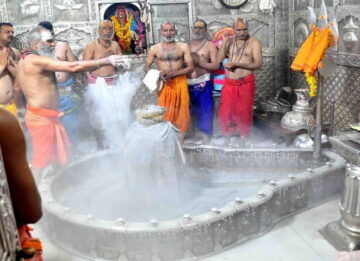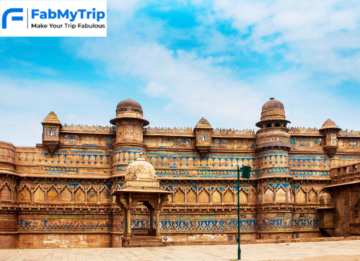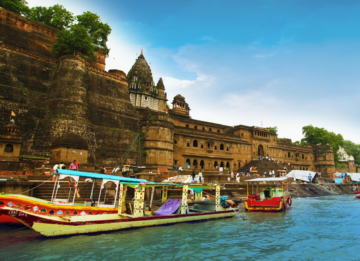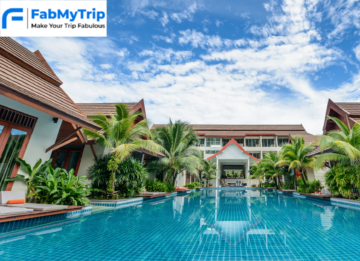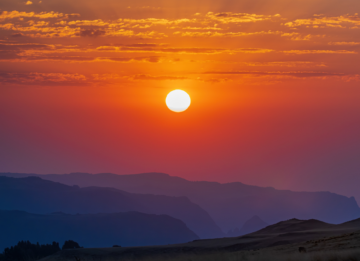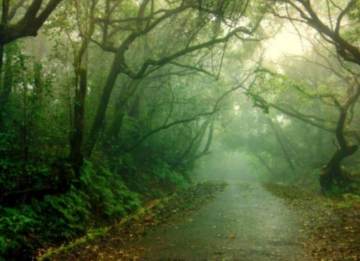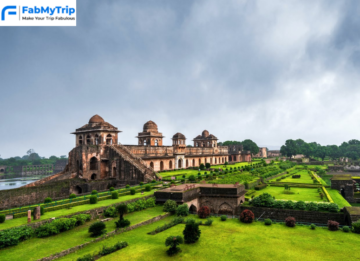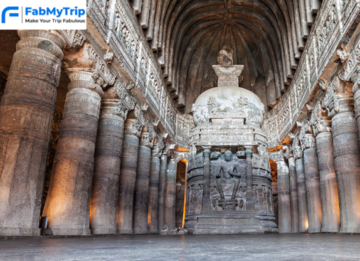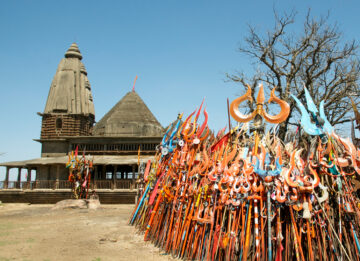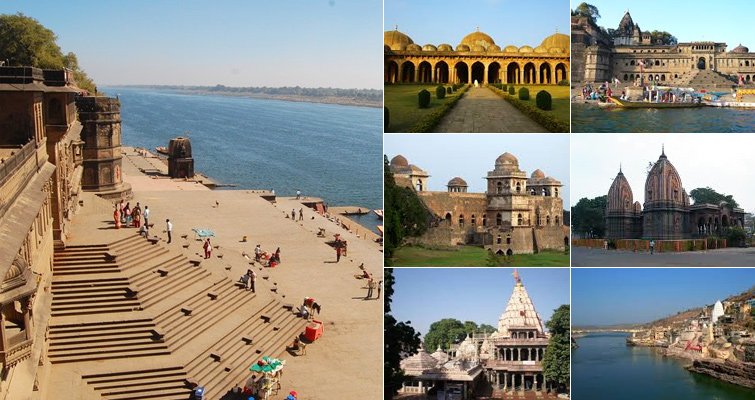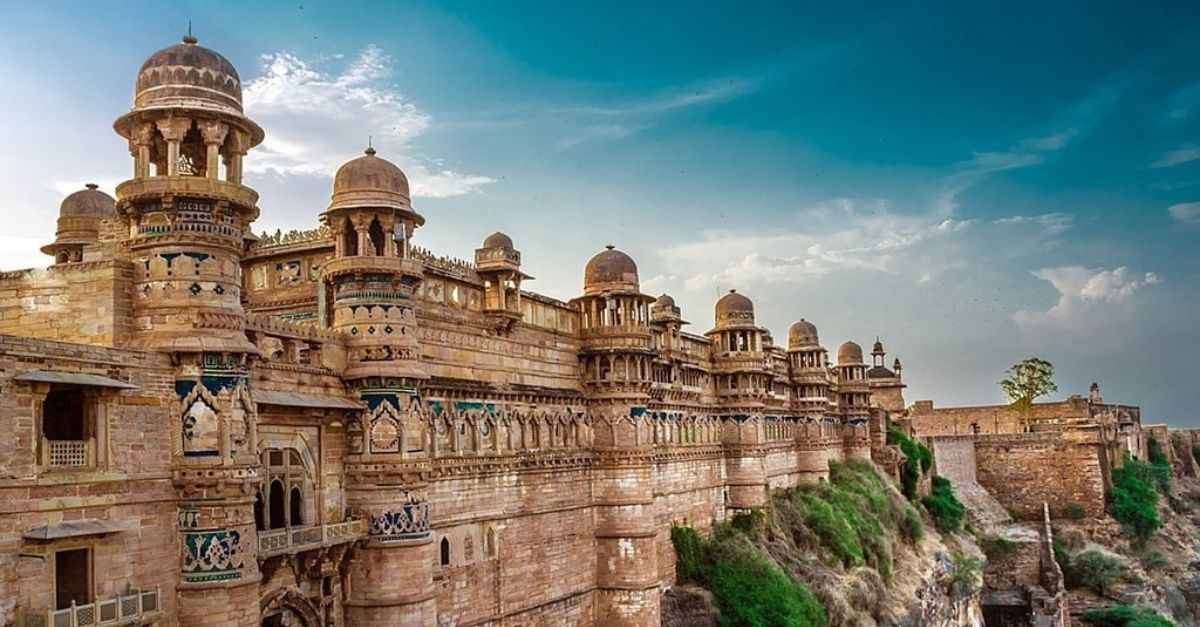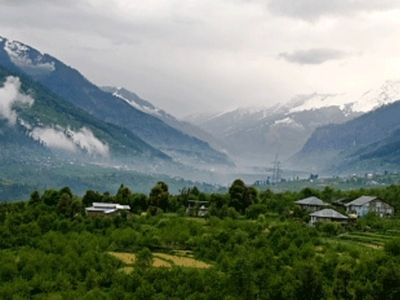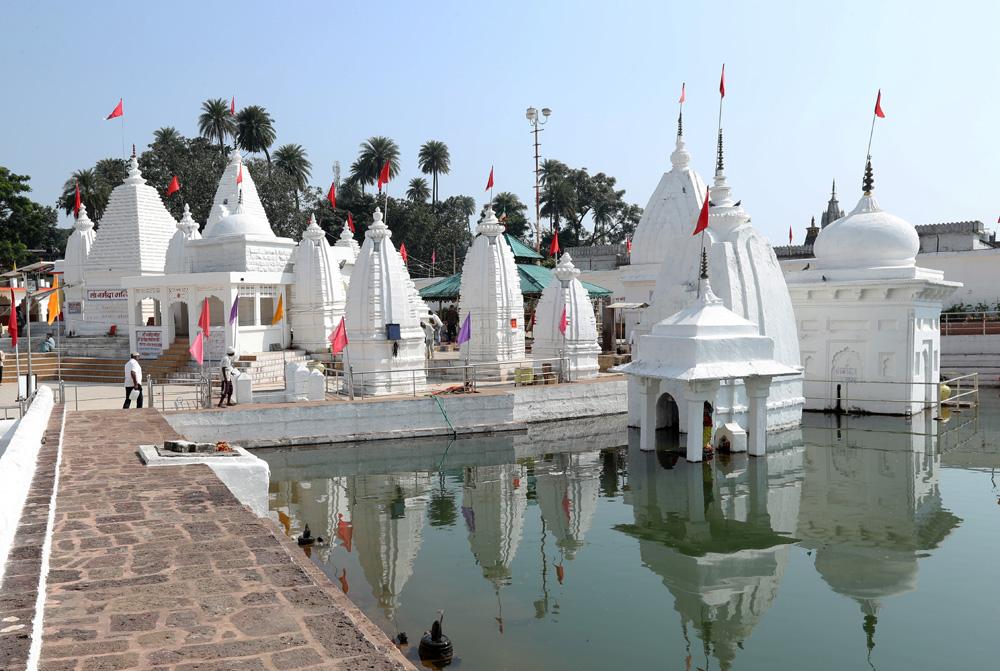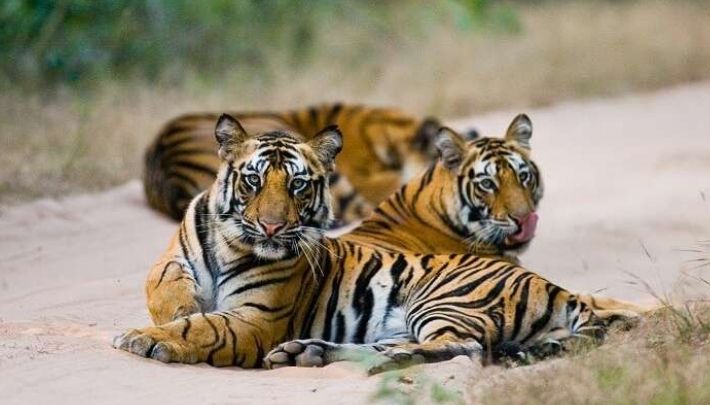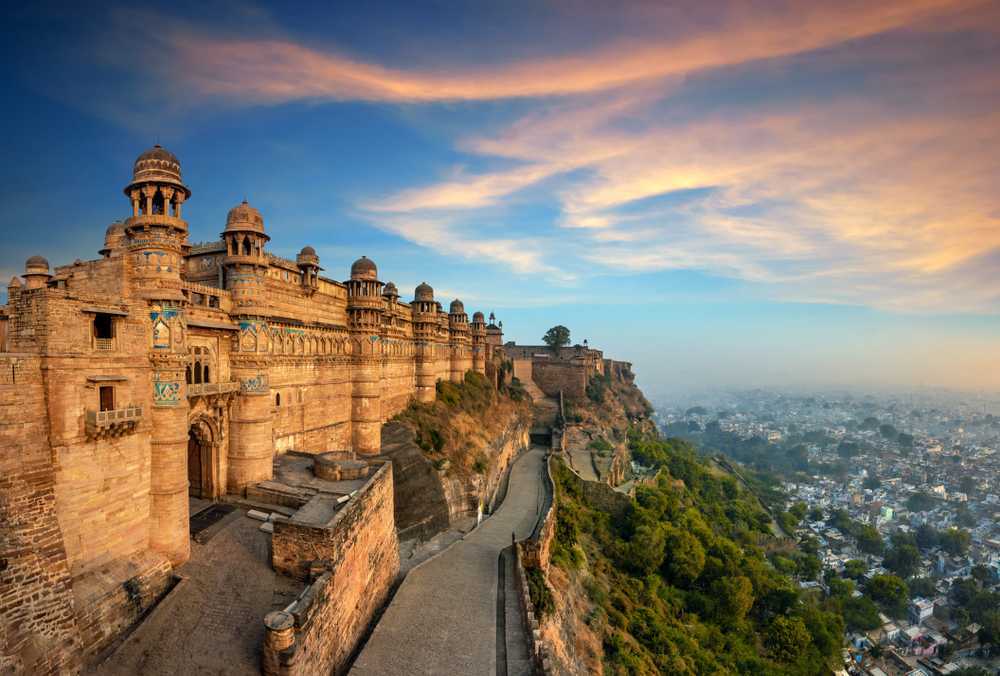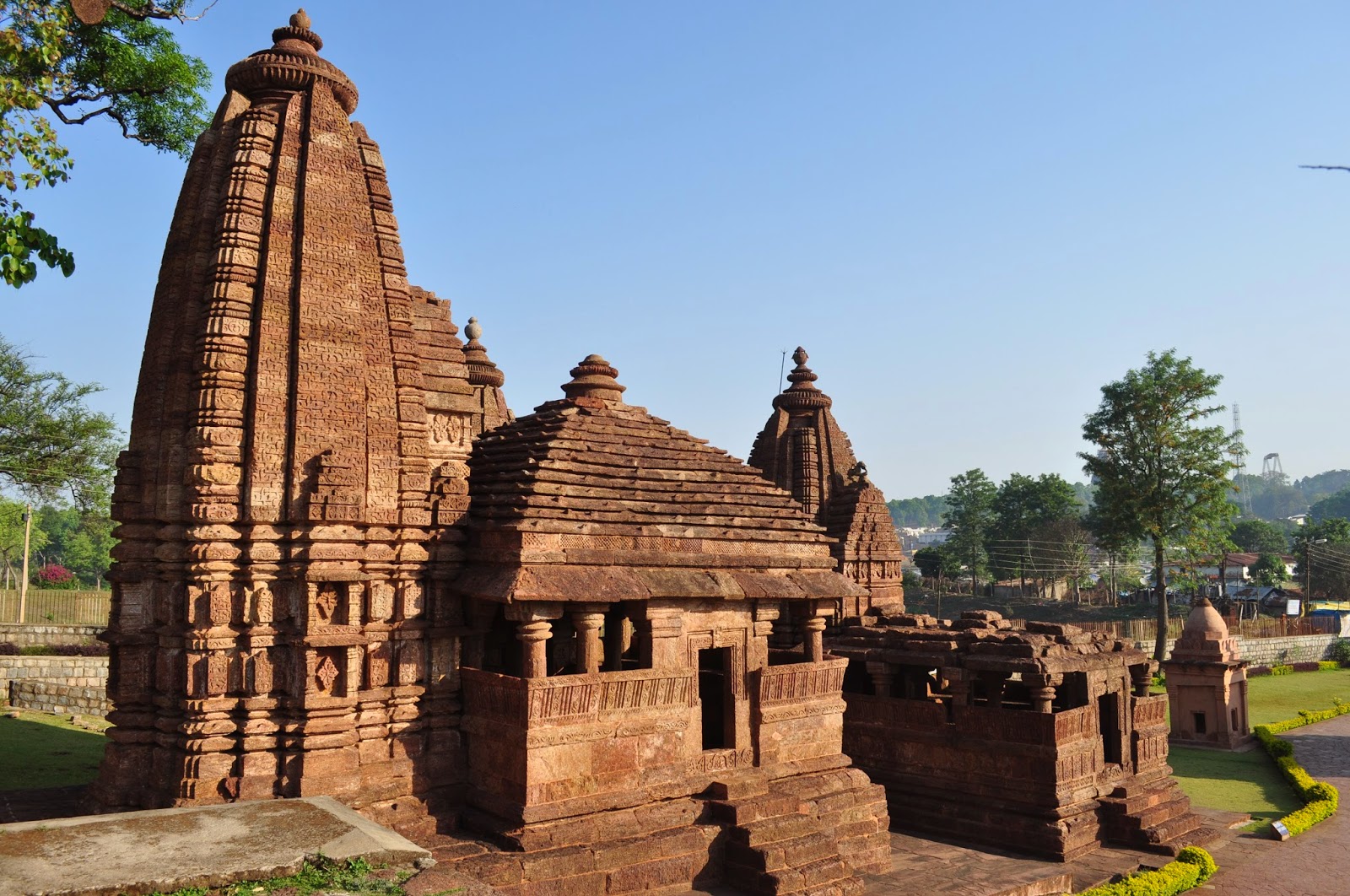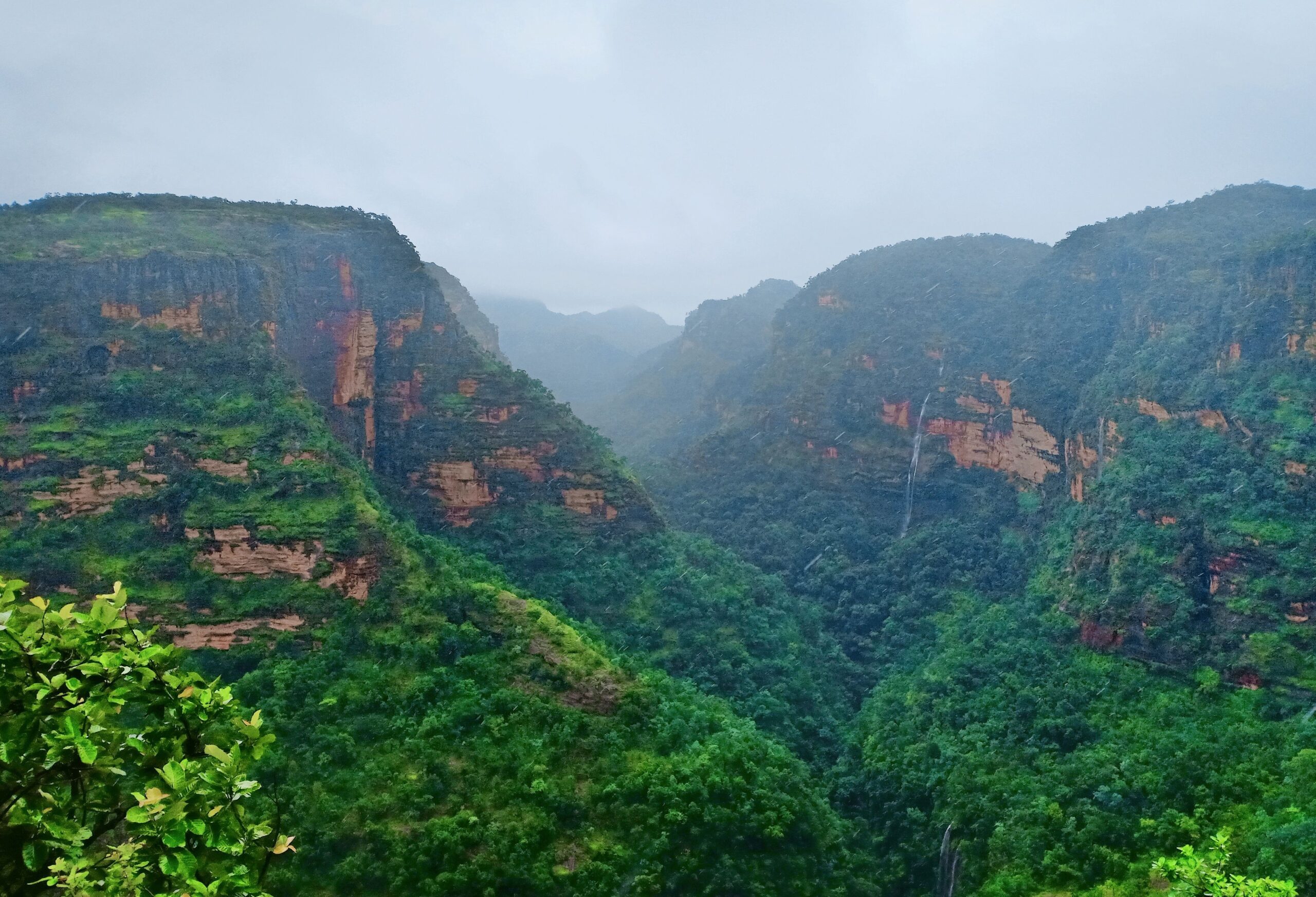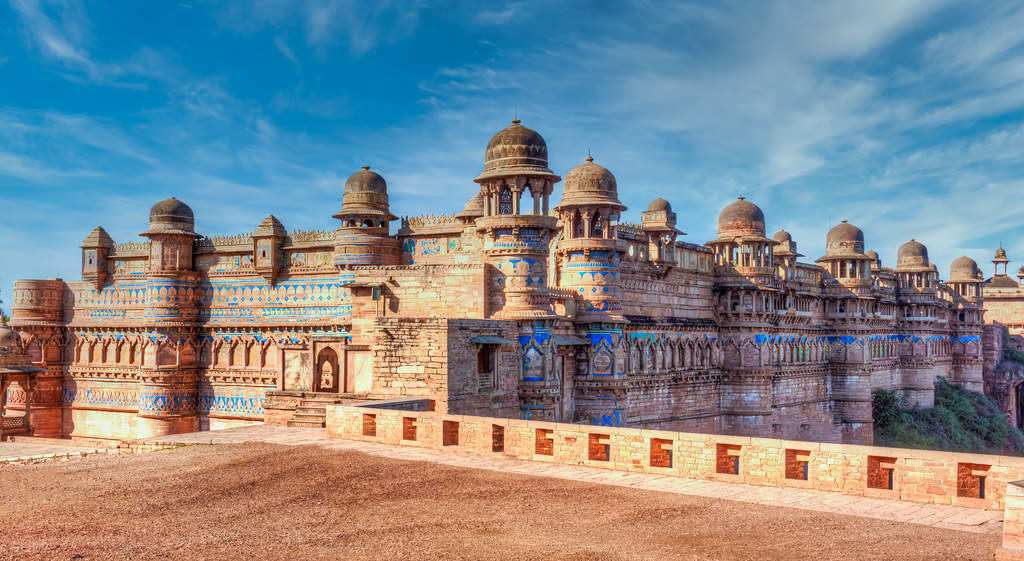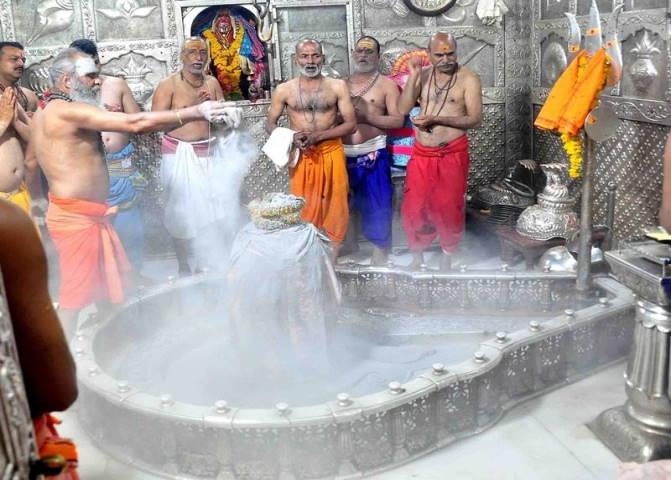Gwalior is the fourth largest city of Madhya Pradesh.
Gwalior in ancient times was also known as Gopgiri because it is situated in the valley between the hills.
It is an old saying that the name Gwalior means the home of Gwalas the rancher of cow/buffalo.
Gwalior falls in the region of Braj and Mathura. the Braj culture had great a connection with cows, buffaloes, milk, butter, curd. so Gwalior and other places derive their name from things associated with cows.
There is another history for this beautiful place. that Gwalior was founded in 8 AD. after a local commander, Suraj Sen who was cured by drinking medicine given by a holy man called Gwalipa. so Suraj set a town and fort and named them after Gwalipa.
Gwalior is also known as the city of music.
Gwalior holds a major position in Indian classical music and art. because it is the birthplace of the oldest Hindustani sangeet Gharana – Gwalior Gharana. Legendary musicians like Tansen and Baiju Bawara are associated with Gwalior. The city had a famous singing school which was attended by Tansen. If you have an interest in music especially in Indian classical music this place should be on your must visited list.
The city is ruled by rulers of different eras like the Mughals, the Tomars, the Marathas, and Scindia.
Because of the ruling of so many different rulers, Gwalior becomes one of the most beautiful cities of India with a rich historical significance. and that is why it has the most beautiful forts in the country, magnificent rock-cut temples, palaces, and museums. There are plenty of cultural as well as historical places to visit in Gwalior for tourists who are interested in history music and our rich heritage
The best time to visit Gwalior is from September to February. 2-3 days are enough to explore Gwalior city.
you must visit Gwalior to experience its history and architecture, apart from the serene ambiance and ancient temples, and consider our Gwalior Heritage tour packages.
How to Reach Gwalior
By Air:
Gwalior has an airport is at a distance of 8 km from the city. It is known as Rajmata Vijaya Raje Scindia Air Terminal. This airport is well connected to all major cities. You can take flights from Gwalior to Mumbai, Hyderabad, Kolkata, Delhi, Goa, and other major cities. Some of these airlines are Air India, Jet Airways, IndiGo.
By Rail:
Gwalior railway station is a major Railway station and comes under the management of the Jhansi Rail Divison.
This Railway Station is located in the city. It is connected to all the major cities across India by regular trains.
By Road:
NH92, NH3, and NH75 connect Gwalior to the major cities in the country.
Gwalior is well connected to all the major towns of Madhya Pradesh and the nearby areas.
Gwalior has a highly efficient public/local transport system and traveling in the city is very easy by buses and auto-rickshaws. Tourists can also book cabs to visit sightseeing spots.
1. Gwalior Fort
It is called ‘The pearl amongst fortresses in India’.This fort is located on a hilltop named Gopachal. The fort was covered in 3 km of area.
There is not any proof to show exactly when the fort was constructed. but many suggest that it has been constructed around the 3rd century by king Suraj Sen.
The king was cured of leprosy with the help of a sage named Gwalipa, who had offered him water from a sacred pond. then king built this fort and named it after the sage to pay him respect. city Gwalior was also named after him.
Inscriptions in the fort are from the 6th Century.
The fort has been ruled by a number of different rulers in its history. like Tomars, Mughals, Marathas, and the British, before finally being handed over to the Scindias.
The Gwalior Fort consists of three temples, six palaces, and several water tanks, museums and is truly an architectural wonder.
There are two main gates of the fort, the Elephant Gate and the Badalgarh Gate.
Inside The Gwalior Fort various special famous architecture situated which were built by great kings. These architectures are the sculptures of Jain Tirthankaras, Man Singh Palace, Teli Ka Mandir, Sas Bahu Temple, Karan Mahal, Vikram Mahal, Gujari Mahal which is now a museum, Gurudwara Data Bandi Chhor
There is breathtaking light and sound show in the fort every evening
The show holds in the Man Mandir. The timings for the show are as follows:
Hindi Show: 7:30 PM
English Show: 8:30 PM
Timing of fort:6am–5:30 pm
Time Required to visit: 3-4 hours
Best Time to Visit Gwalior fort: October and March, monsoon are also good for visiting this fort.
How To Reach: By auto-rickshaw
Entry Fee : Indians: Rs 75 per person
Foreigners: Rs 250 per person
Kids (below 15 years): Free
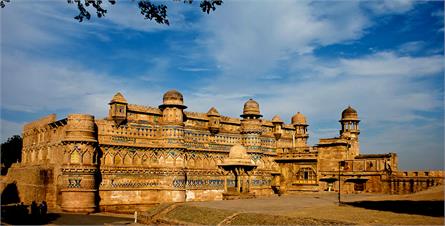
2. Jai Vilas Palace Gwalior
Jai Vilas Palace is the most popular tourist attraction place of Gwalior city.
It was established in the year 1874 by Jayajirao Scindia the Maharaja of the Gwalior. Some part of the palace is now converted into the “Jiwajirao Scindia Museum” and another part of it is the residence of his descendants. It is designed and constructed by Sir Michael Filose. The palace is definitely an architectural marvel
It is spread over 124,771 square areas and is mostly famous for its large Durbar Hall.
Darbar hall has a luxurious carpet adorning the hall which is considered to be one of the largest in the world.
The first floor of the palace is constructed in Tuscan style. while the second and third floors are inspired by the Italian-Doric and Corinthian methods
A special feature of the Palace is a big dining table, on which a silver train with glass carriages is put around. It serves delicacies, like brandy or cigars. one more attraction of the palace is the pair of custom-made chandeliers which is from Vienna. Its weight is 3.5 tonnes.
The most visited place in the palace is the jivajirao Scindia museum. which consists of the rare artifacts’ collections that are available for viewing in the main Durbar Hall and beyond. It also carries the original shield of Jhansi Ki Rani and swords from the monarchy of Aurangzeb and Shah Jahan. Expensive assets like a silver chariot, palanquins, silver buggy, vintage luxury cars are also exhibited there.
The palace possesses several unique items like rare paintings by Indian and European masters.
It also has an extensive library that has around 5000 books on various topics.
If you want to witness royalty with so many historical artifacts this place is definitely worth visiting. Italian marble flooring, ornate accessories, lavish Persian carpets, and rare antiquities from various parts of the world make it more royal which gives you larger-than-life experiences.]
Timings: 10.00 AM to 5:00 PM: Wednesday Closed
Time Required: 2-3 hrs
Entry Fee : Indians: Rs 100,
Foreigner Nationals: Rs 600,
Camera/Mobile:Rs 70,
Video Camera: Rs 150,
Children (up to 5 years): Free,
Physically Challenged People: Free
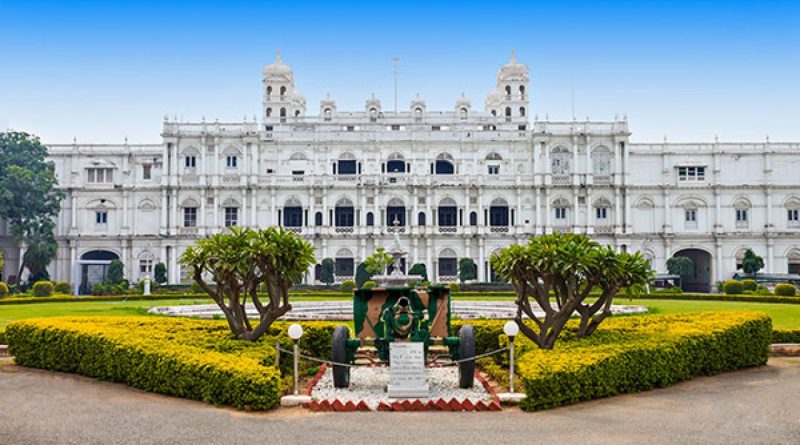
3. Man Singh Palace Gwalior
The Man Singh Palace was built between 1486 and 1516. it is situated in the north-eastern end of the Gwalior Fort. It is a four-story building out of which two stories above ground and two stories below ground.
It is built by Man Singh of the Tomar Dynasty. later passed through the hands of several dynasties like Rajputs, Mughals, Delhi Sultanate, Marathas, British, and Scindias.
The palace is famous for its craftsmanship on the walls. The walls are covered in blue, yellow, and green tiles applied in duffel of geometric patterns, animals, and trees.
The construction material used for the palace is granite stone, sandstone, wood, and marble.
The Hathia Paur gate is the main entrance to the Man Mandir Palace.
There is the Juhar Kund in the palace. It is believed that in this kunda the queens along with the royal patronage ladies self-immolated in the time of war when the Maharaja’s death takes place in the battle with Ibrahim Lodhi in the year 1516.
It is maintained by the tourism and archeological department of Madhya Pradesh.
There is a special place for women to learn art and culture-related studies.
There is a circular prison inside the palace where Aurangzeb imprisons and murders his brother Murad.
Timings: 10:00 am to 5:00 pm
Ticket charges: No
Time required: 1-2 hours.
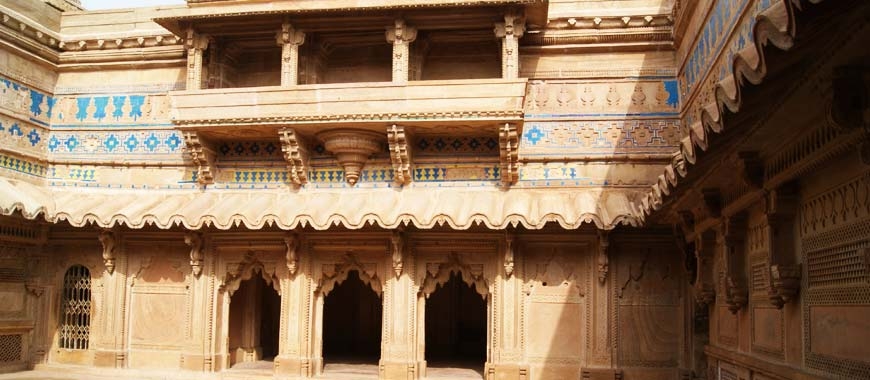
4. Saas Bahu Temple Gwalior
This Temple is a part of the Gwalior Fort situated to the east of Gwalior fort. The temple was a three-storeyed building. but now it is mostly in ruins and damaged from numerous invasions and Hindu-Muslim.
The name Sas-Bahu does not literally mean Saas(mother-in-law) and bahu(daughter-in-law) it is devoted to Lord Vishnu and shiva.
In the first place, Saas Bahu Temple was known as Sahastrabahu Temple or Harisadanam temple which is another name for Lord Vishnu. which means many hands. It is one of the best places to visit in Gwalior fort.
This temple was constructed in the time of King Mahipala of the Kacchapaghata Dynasty in the 11th century.
These are two temples placed side by side to each other and have very beautiful carvings and sculptures.
There are 4 idols of Brahma, Vishnu, and Saraswati above its entrance door. The carvings on the pillars show Vaishnavism, Shaivism, and Shaktism relation.
Time Required: 1 hour
Timing: 8 AM to 5 PM on all days of the week.
Entry Fee: Free
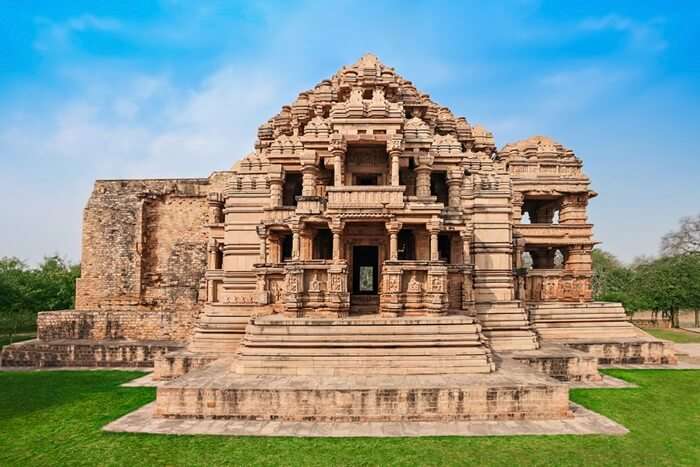
5. Sun Temple Gwalior
This temple is dedicated to the holy Sun God. and it was constructed by industrialist G.D. Birla in the year 1988. It is also known as Vivaswan Temple.
An impressive idol of the Sun Lord is placed in the temple.
Initially, it was known as Tapovan Garden, but now it changes to Surya Van or Surya Garden.
The inspiration for this temple is taken from the popular Sun Temple of Konark, Orissa.
The interior of the temple is in white marble and that the exterior is made with red sandstone which gives it a very pictorial view.
the temple is surrounded by very beautiful greenery.
The building of the temple is constructed in the shape of a chariot. which pulled by seven horses each one showing seven days of the week. 24 wheels of the temple show the 24 hours of a day. There are 365 idols of Gods around the temple showing 365 days in a year.
Although this temple was not constructed long ago it does not have any historical significance compared to others.
but its eye-catching architecture and beauty makes Surya Mandir one of the popular pilgrimage places in Gwalior
Timings: 6:30 AM – 12:00 PM, 1:00 PM to 6:00 PM
Time Required: 1 hour
Entry Fee: Free
Best Time to Visit: winters (October and March.)
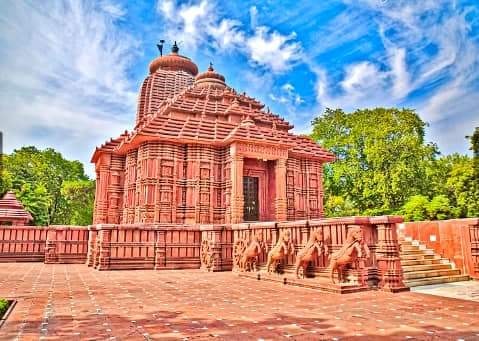
6. Tighra Dam
Tighra Dam was constructed in the year 1916 on the Sank River. It is situated about 23 km away from the city
It is a major water source for city dwellers for daily water needs.
The water of this dam is not only used for domestic use but also for irrigation and fishing in the nearby villages.
It is a great picnic spot where one can enjoy various rides. There are a wide variety of boat rides such as water scooters rides, Jalpari boating, paddle boating, and even speed boating.
The area of the dam became a habitat for several birds and so the area was later declared as a Bird Sanctuary.
The dam is full of different types of fish and other water creatures
If you looking for places to visit in Gwalior in one day or a quick getaway place then this place is worth visiting.
The best time to visit: January to March and October to December.
Timing: 9 am – 5pm
Time Required to Explore: 3 to 4 hours.
Entry Fee: free but boating and other activities are chargeable.
Boating Cost: Rs. 50 per person, Speed Boat, Rs. 50 per person, Jalpari Boat, Rs. 100 per Paddle Boat & Rs. 350 per person for Water Scooter.
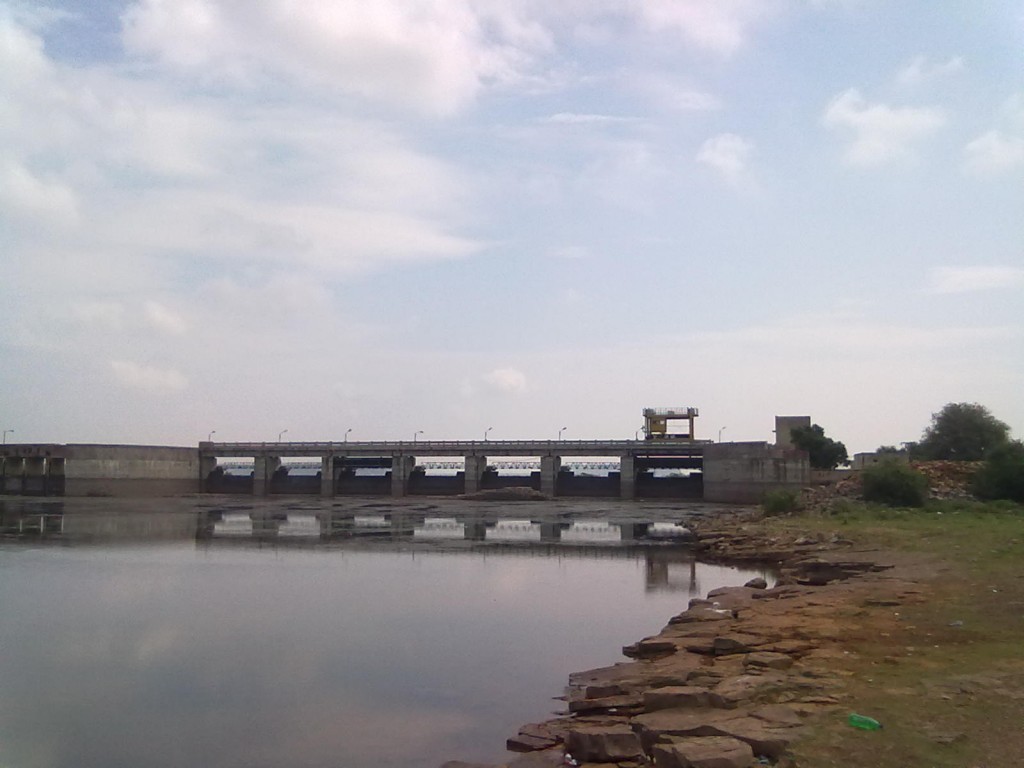
7. Gopachal Parvat
It is situated inside Gwalior fort, on the south side. There are various age-old Jain carvings. These are a group of rock-cut sculptures.
Kings of the Tomar dynasty including Veermadev, Dungar Singh, and Kirti Singh constructed this place.
Gopachal Parvat is popularly known for the 7th and 15th century rock-cut Jain monuments. These monuments are of Jain Teerthankaras like Adinatha, Rishanabhanatha, Mahavir, and Neminatha. Idols of these Teerthankaras are in a meditative posture.
The most amazing statues here are standing Adinath and Parshvanath in a cross-legged sitting position.
There are approximately 100 sculptures.
Timing: 24 hours open for visitors.
Entry Fee: Free of cost.
Time Required to Explore: Around an hour.
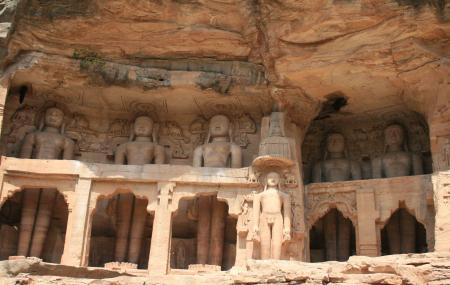
8. Tomb of Tansen
Tomb Of Tansen the complex is famous as Tansen Memorial and one of the sightseeing attractions in Gwalior. It was built in 18 th century.
Tansen was buried in the complex with his guru Muhammad Ghauswho taught him Hindustani classical music. Tansen is a very legendary musician and one of the nine gems of the Mughal court. He is the developer of the Gwalior Gharana style of music.
Tansen has such magic in his voice that it is said his music and causes rain and even entrance animals by his music.
The tomb is a simple architecture in Mughal architecture. with intricately carved doors and walls that are draped in lattice windows.
every year in the months of November and December the national level music festival has organized this complex for promoting Indian classical music and to honor this noble musician, many great musicians from the country come to participate in that.
there is a tamarind tree near the tomb and the saying is that the leaves of the tree were chewed by a great singer for a sweet voice.
people who are there say that t if you eat one or two leaves from the tree, your voice becomes as melodious as Tansen’s on should definitely try that.
Timing: 8 am to 6 am on all weekdays.
Entry Fee: Free of cost.
Time Required to Explore: Around an hour.
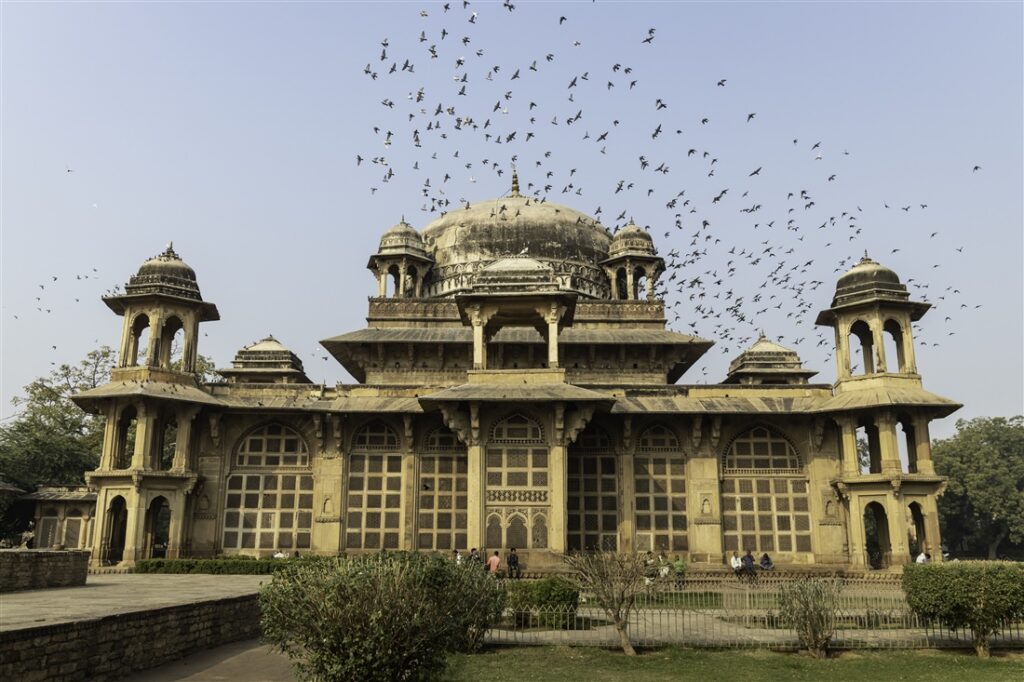
9. Padavali and Bateshwar
Padavali is a fortress that was built in 18-century by the Jat Ranas rulers of Dhaulpur. Bateshwar is a cluster of 200 mini ancient temples spread across 25 acres which were built across slanted hills near Padavali. It is believed that these temples were built around the 8th-10th century AD. It is believed that these were constructed in the time of the Gurjar-Pratihara dynasties. Temples are built mainly using red sandstone.
The temples are dedicated to Shiva and Vishnu.
These temples have complex carvings and one of the temples also has erotic carvings so it is famous as mini Khajuraho.
These temples were discovered in 2005 while excavating. These excavations are done by ASI and the archeological work is still going on.
Their fine craftsmanship has to be done on these temples. Scenes from great Indian epics like Ramayana, Mahabharata & Puranas are carved. Tales related to Krishna Leela, Samudra Manthan, the wedding of Shiva and Parvati, death dance of Shiva are so beautifully sculpted that they give a three-dimensional effect.
this place is worth visiting for history lovers.
Timing: 9:30 am to 5:30 pm on all weekdays
Entry Fee: Rs 15 per person.
Time Required to Explore: At least a day.
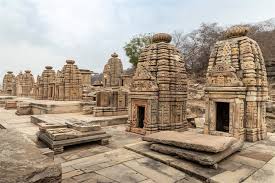
10. Samadhi of Rani Laxmi Bai
Samadhi of Rani Laxmi Bai is situated in the middle of Phool Bagh. The Samadhi is in a very beautiful and well-maintained garden.
She is the greatest warrior in India. And inspiration for every Indian woman’s struggle for freedom is put a very great example.
She lost her life fighting against the Britishers to save the princely state of Jhansi in the war.
An eight-meter-tall metal statue is installed to honor her bravery and courage. In the position of riding a horse with a sword in her hand and a child at her back.
A fair is organized at the Samadhi of Rani Laxmi Bai every year in June which promotes the tourism of Gwalior.
Timing: 24 hours open for visitors.
Entry Fee: Fee
Time Required to Explore: Around 30 minutes.
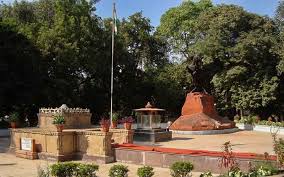
11. Gurudwara Data Bandi Chor Sahib
It is situated on the hilltop where the Gwalior Fort is located.
This Gurudwara was built in memory of the sixth Guru Sant Har Govind Singh.
It is said that Mughal Emperor Jahangir had imprisoned Sant Har Govind Singh at this place so gurdwara was built in this particular place. This gurudwara was built for celebrating the release of the guru from Gwalior Fort. Its name itself suggests the same the word “Bandi” means “imprisoned”, “Chhor” means “release”.
while released from imprisonment Guru Sant Har Govind Singh also got successful in releasing 52 Rajput rulers with him who was also imprisoned in the Fort.
The gurdwara was built in white marble and was decorated in gold. The present building complex is spread over six acres.
It has a huge langar hall, the Gurudwara has very good rooms for the visiting devotees.
for the Sikhism followers, this place is very prestigious for worship and pay their homage.
It is must visit place in Gwalior fort.
Timing: 10 am to 10 pm on all weekdays.
Entry Fee: Free of cost.
Time Required to Explore: 45 minutes to an hour.
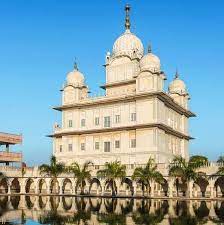
12. Gwalior Zoo
The zoo is established in the year 1922 by the royal family of Madhao Rao Scindia. Now it is maintained by the Municipal Corporation of Gwalior
It is also known as the Gandhi Zoo. It is part of a Phool Bagh garden and carries various rare animals species.
like, Hyena, bison, Golden peasants, sambhars, spotted deer, blackbucks, and a white tiger are some of the wild animals present in the zoo. a smaller amount of crocodiles, monkeys, snakes, and birds have also resided here. It also has some rare and colorful birds.
Rare species of wild animals reside here so the 8 hectares of land of the zoo has been declared to be a protected site.
It is an ideal spot for a day tour or weekend getaway with family and friends.
Timings: 8 am – 6:00 pm closed on Friday
Time Required: 1-2 hrs
Entry Fee : Adults: Rs 20, Kids: Rs 5
Camera charges are applicable here.
Time Required to Explore: 2-3 hours(approx)
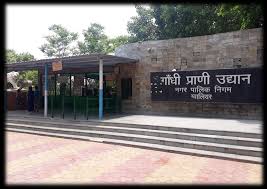
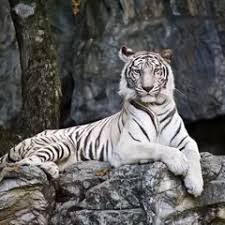
13. Suraj Kund Gwalior
Suraj Kund in Gwalior reservoir is located in Gwalior fort.
It was constructed by Suraj Pal of the Tomar Dynasty in 10 th century it is one of the oldest reservoirs. He was a sun worshipper and so built a Sun Temple.
Surajkund means the ‘Lake of the Sun’.
the lake is surrounded by the disfigures of an ancient sun temple, with a beautiful garden and a pool named Siddha Kund.
It is believed that the water of this lake cures chronic diseases and act as medicinal water that water has some magical powers.
legends say that by drinking water from this lake fonder of the city Suraj sen got cured of his laparoscopy disease.
watching sunset and sunrise from the Suraj kunda is the best thing to do.
Timings: 8:00 am – 6:00 pm all weekdays
Time Required: 1-2 Hours
Entry Fee: free.
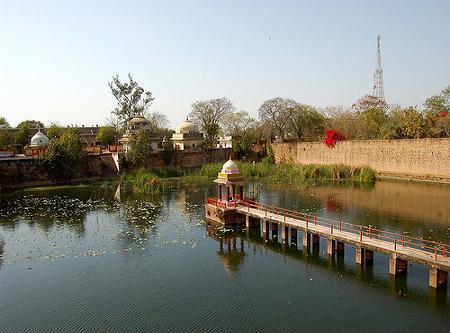
14. Teli ka mandir Gwalior
This temple is located in the Gwalior Fort. It was constructed in the 9th century. It is the highest building in Gwalior i.e,100 ft.
It is dedicated to Shiva, Vishnu, and Matrikas.
Many assume that the temple may have been built during the reign of the Gurjara-Pratihara Mihira Bhoja.
The Dravidian look of the temple which is its unique architecture makes this more famous. The sculptures present here the fusion of Southern and Northern architectural styles of India
It is the oldest temple in the fort.
The temple has architecture and inscriptions related to all three major traditions of Hinduism. Shaivism, Vaishnavism, and Shaktism
The outer walls of the temple have been greatly carved.
These walls have various statues, but it is all empty now and shows signs of damage.
The temple is currently under the maintenance of the Archeological Survey of India.
Timings: 8:00 AM – 6:00 PM All weekdays
Time Required: 1 hour
Entry Fee: Rs 10 – Rs 20 per person
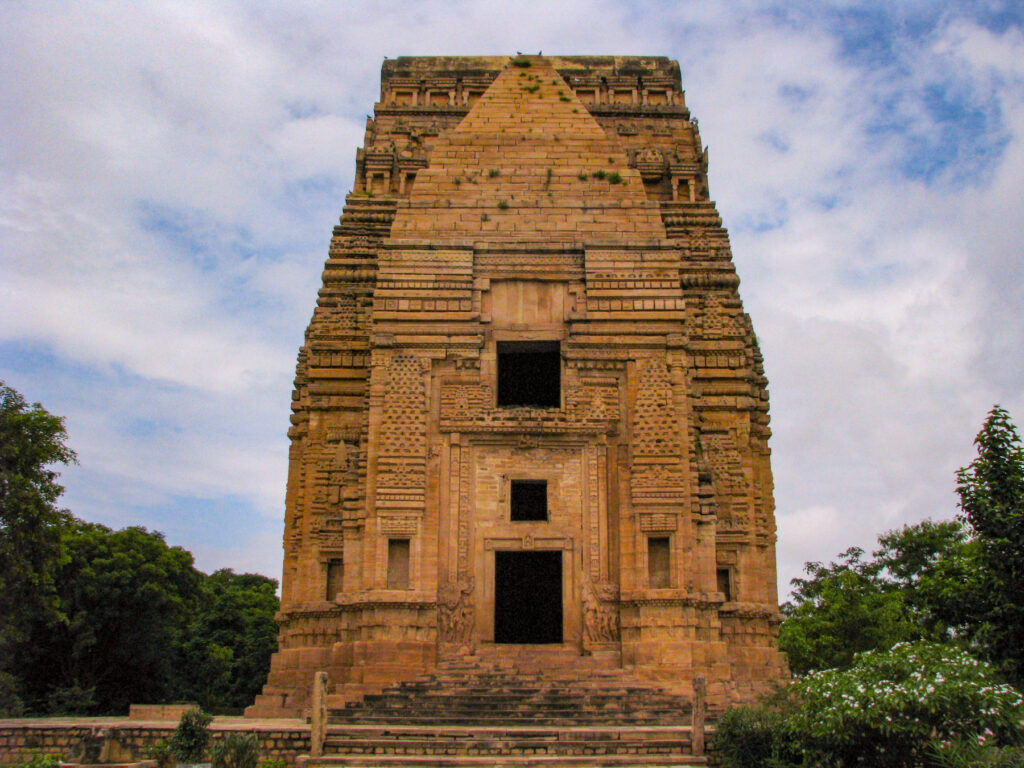
So this small list of places to visit in Gwalior. there are many other places also that you want to visit. so if you want to take some time out from your busy schedule and plan a trip to Gwalior for a blissful holiday experience of history, culture, and art.
we have a lot to offer you in our Gwalior tour package. Do visit us.https://www.fabmytrip.com/
